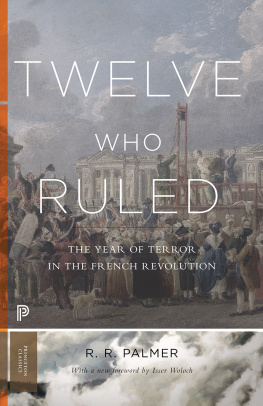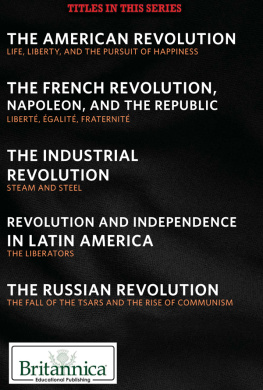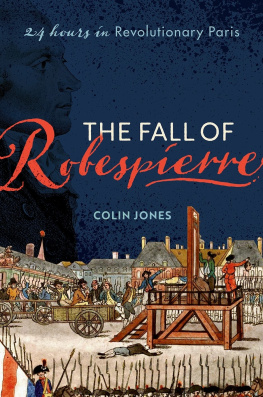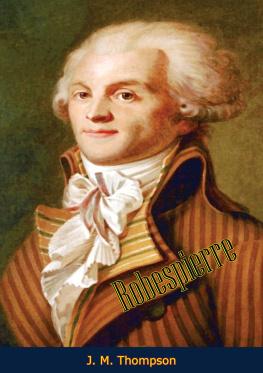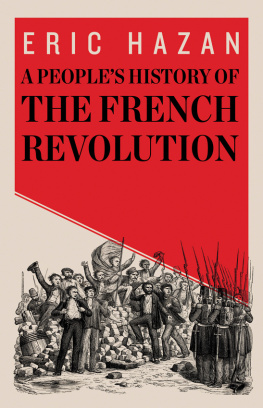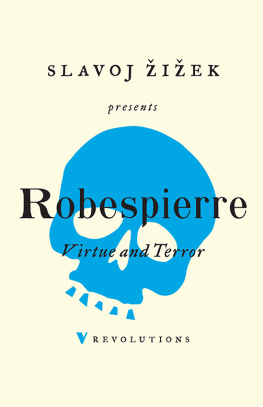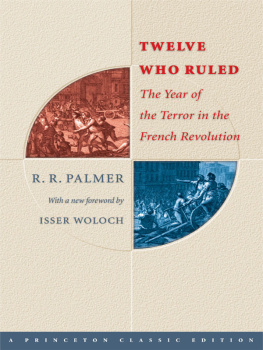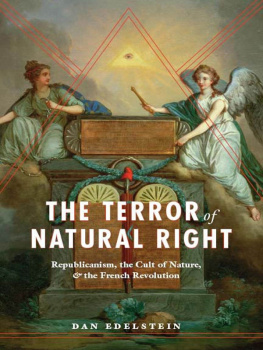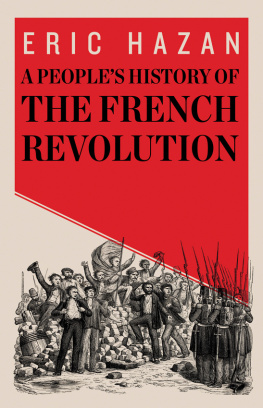
Twelve Who Ruled
Twelve Who Ruled
The Year of the Terror in the French Revolution
BY R. R. PALMER
With a new foreword by Isser Woloch

PRINCETON UNIVERSITY PRESS
PRINCETON AND OXFORD
Copyright, 1941, renewed 1969 by Princeton University Press
Bibliographical Note 1989 by Princeton University Press
Foreword to the Princeton Classic Edition 2005 by Princeton University Press
Published by Princeton University Press,
41 William Street, Princeton, New Jersey 08540
In the United Kingdom: Princeton University Press,
3 Market Place, Woodstock, Oxfordshire OX20 1SY
All Rights Reserved
First Edition, 1941
Bicentennial Edition, 1989
First Princeton Classic Edition, with a new foreword by Isser Woloch, 2005
Library of Congress Cataloging-in-Publication Data
Palmer, R. R. (Robert Roswell), 19092002
Twelve who ruled : the year of the Terror in the French Revolution / by R.R. Palmer ; with a new foreword by Isser Woloch.
p. cm. (Princeton classic editions)
Originally published with the subtitle: The Committee of Public Safety during the Terror. Princeton university press, 1941.
Includes bibliographical references and index.
ISBN-13: 978-0-691-12187-1 (pbk. : alk. paper)
ISBN-10: 0-691-12187-7 (pbk. : alk. paper)
1. FranceHistoryReign of Terror, 17931794. 2. France. Convention nationale. Comit de salut public. 3. RevolutionariesFranceBiography.
I. Title. II. Series.
DC177.P33 2005
944.04'0922dc22 2005045401
Printed on acid-free paper.
pup.princeton.edu
Printed in the United States of America
5 7 9 10 8 6
CONTENTS
LIST OF ILLUSTRATIONS
FOREWORD TO THE PRINCETON CLASSIC EDITION
P UBLISHED in 1941, Twelve Who Ruled has been in print ever since. In the field of French revolutionary studies, at least, such longevity is extremely rare, but the explanation is not hard to find. Long before certain prominent historians rediscovered the virtues of the strong narrative in the 1980s (narrative, or event history, having fallen out of fashion among academic historians in the 1950s in favor of analytic studies), R. R. Palmer crafted a compelling narrative on a subject central to comprehension of the French Revolution.
In the sixty-odd years since the books publication, I have been using it in the classroom for about half that period. I have thus read and reread the better part of this volume perhaps twenty times, and it has never paled. In turn, students without fail have responded enthusiastically. Twelve Who Ruled invariably wins praise not only from undergraduates new to the French Revolution, but also from sophisticated graduate students, and even (in one instance) from life-long learners with opinions as strong as their interest. Both its publishing history and my personal teaching experience suggest that the books appeal has been impervious to changing historiographical fashion, political contexts, and attention spans.
* * *
What is the veritable subject of this truly classic work? In the course of its publishing trajectory the book has appeared under two subtitles: The Committee of Public Safety during the Terror and The Year of the Terror in the French Revolution. (A French translation, finally published in 1989, aptly called it Le Gouvernement de la Terreur: lAnne du Comit de Salut Public [The Government of the Terror: The Year of the Committee of Public Safety].) Focused on the tumultuous Year II of the French Republic (179394), the book recounts the creation of a revolutionary dictatorship by the National Convention elected in 1792 after the second revolution and the fall of the monarchy. The period is known as the Reign of Terror because in the summer of 1793 revolutionary militants loudly insisted that terror be placed on the order of the day. Under duress, the Convention acceded to that demand and then suspended, until the peace, its newly enacted democratic constitution, all elections, and ordinary civil libertiesthree defining elements of the Revolution in 1789.
In its fifth summer, the Revolution faced a multifaceted crisis, only in part of its own making, which threatened to overwhelm the Republic. In the five-front war being waged by its foreign enemies, most of the Republics armies had foundered. In March a widespread rebellion had spawned a savage guerrilla war in the region of western France known as the Vende. Severe food shortages and inflation threatened the subsistence of the towns as well as the nations armies. This in turn stoked an escalating desperation and militance in Paris that could have potentially turned against the Convention itself. In the face of all this the Convention remained hopelessly divided, almost paralyzed by the fratricidal factionalism of Girondins (or Girondists) and Montagnards within the revolutionary leadership.
With due attention to the complexity of this situation, Palmer understood that one problem underlay all the othersthe need for a government sufficiently unified, powerful, and legitimate to master the crisis, whatever might have caused it in the first place. This stands as the leitmotif of the book. The Convention haltingly arrived at that conclusion itself when, in June 1793, it succumbed to Parisian pressure and effected unity by partition by purging the leading Girondin deputies. It then was free to begin putting into place draconian emergency laws that amounted to a temporary revolutionary dictatorship. While retaining nominal control, the Convention ceded much of its authority to a select committee of deputies called the Committee of Public Safety (CPS). The pivotal role of that committee has always been understood but until 1941 had never been the subject of a thorough historical study.
One needs a point of view for such an assignment, but also an open mind. R. R. Palmers moral compass was always set in relation to liberal democracy, and his narrative accordingly depicts the revolutionary, or Jacobin, dictatorship of the Year II as at once necessary, flawed, creative, successful, and disastrous. Palmer found much to deplore in the events that unfolded over the following year, but he recognized the plausibility of the devils bargain that the Convention was making. The CPS wielded power commensurate with its dire responsibilities. After some initial comings and goings by its members, the CPS came to comprise the kind of men ready to make hard, morally perilous choices and, after arguing it out among themselves, ready to unite behind those decisions. Such was the unflinching leadership that the CPS provided, a model not surprisingly admired by later generations of hard-core revolutionaries.
The CPS became in effect a war cabinet vested by its colleagues with near-dictatorial powers. Palmer approached it both as a group of distinct, strong-willed individuals and as a new kind of institution in historical annals. Individually, its twelve members had widely diverse backgrounds, experience, and temperaments, especially after the final two members, Collot dHerbois and Billaud Varenne, were co-opted in September, thereby bringing into the government two of the most extreme personalities in the Convention rather than leaving them free to snipe at the Committee from the outside. Except for that on Robespierre and Jeanbon Saint-Andr, the biographical scholarship on which Palmer could draw was limited, but his sketches of these twelve individuals remain incisive and evocative.
Next page
